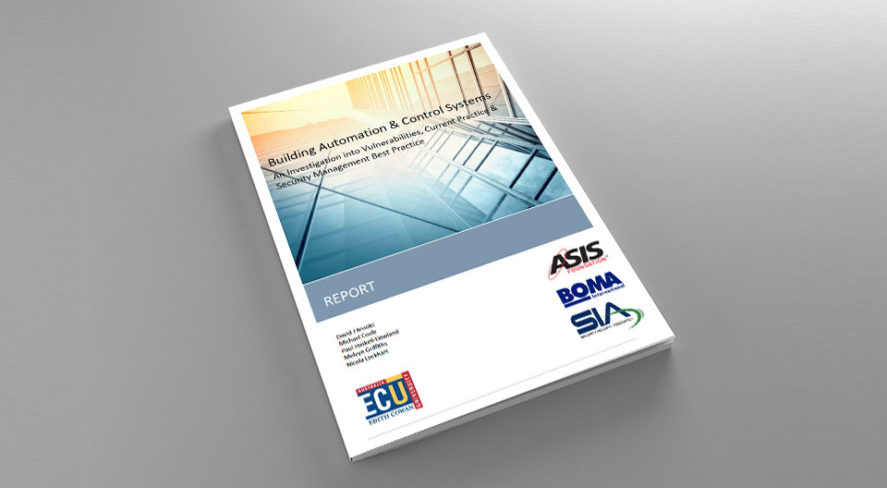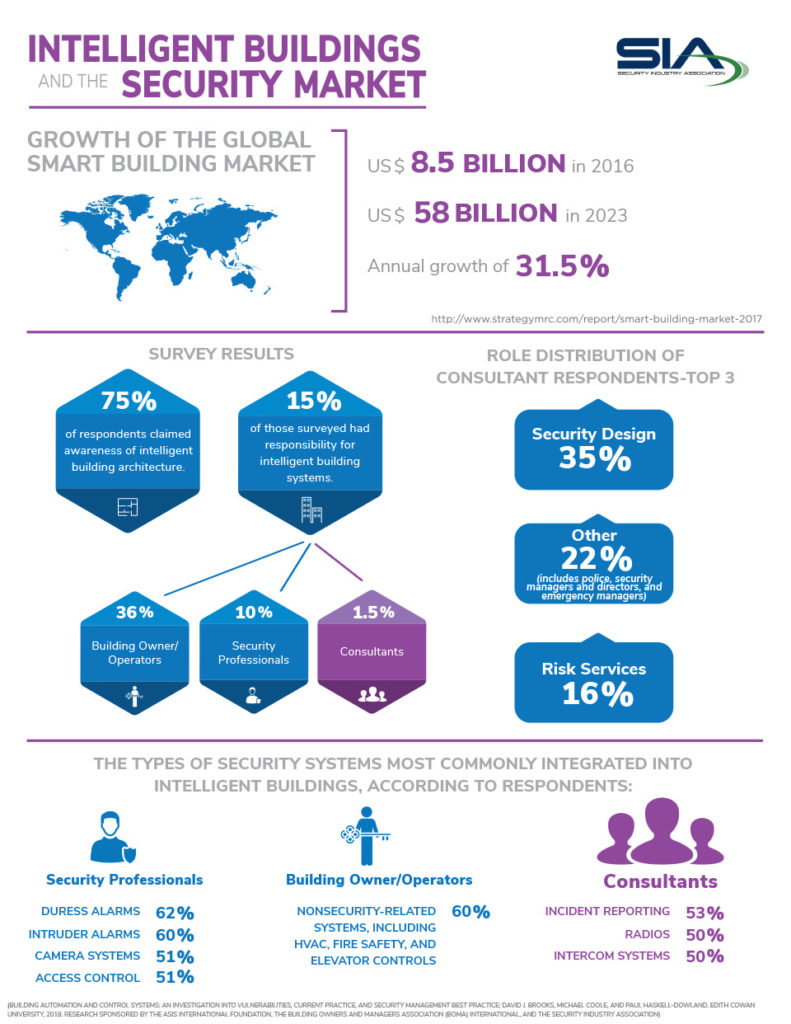Intelligent Building Management Systems Report on Building Automation and Control Systems

Co-presented by the Security Industry Association (SIA), ASIS Foundation and BOMA International (BOMA), these report and research materials provide groundbreaking, first-of-its-kind guidance for practitioners in the security and building management fields. Intelligent Building Management Systems: Guidance for Protecting Organizations provides a framework to help decision-makers assign a risk-based criticality or impact to their building and asks relevant security questions to develop appropriate mitigation strategies. It also serves to establish a common language between the many intelligent building stakeholders.
The guidance is based on original research, Building Automation & Control Systems: An Investigation into Vulnerabilities, Current Practice and Security Management Best Practice, by David J. Brooks, Michael Coole, and Paul Haskell-Dowland of Edith Cowan University in Perth, Australia. The research provides an exhaustive overview of identified intelligent building critical vulnerabilities and mitigation strategies.
Intelligent Building Systems Resources:
GUIDANCE DOCUMENT: Intelligent Building Management Systems: Guidance for Protecting Organizations
This guidance provides both the security and facility professional with the necessary information and a framework to protect their organizations against risks associated with Intelligent Building Management Systems (IBMS) vulnerabilities. The guidance aims to support such decision making in combination with relevant standards, guidelines, and other resources.
The guidance provides checklists to assist practitioners in protecting their facilities against vulnerabilities associated with IBMS. The checklists take an organization’s risk level into account and then asks a series of directed security questions that lead to mitigation strategies.
FULL REPORT: Building Automation & Control Systems: An Investigation into Vulnerabilities, Current Practice & Security Management Best Practice
The report found that the intelligent building market is growing 31 percent per year and is expected to exceed $59B by 2023. These systems are increasingly embedded into the contemporary built environment due to the demand for reduced operating costs, government regulation, and greater monitoring, control and interoperability. However, this growth comes with a substantial set of security vulnerabilities that many security and facility professionals have not accounted for. Importantly, the research finds a significant disconnect between security and facility professionals’ perceived understanding of intelligent building threats and risks versus actual dangers. In addition, the report revealed that a lack of common terminology and practices can result in misunderstandings and siloed views of associated security risks. The report findings emphasize the need to:
- Take a multidisciplinary proactive management approach to intelligent building vulnerability mitigation, and
- Fuse multidisciplinary participants into an intelligent building security team.
Additional findings include the recognition of intelligent building integrators and cybersecurity experts as partners who can help organizations better understand threats and risks, and more effectively achieve intelligent building security.

